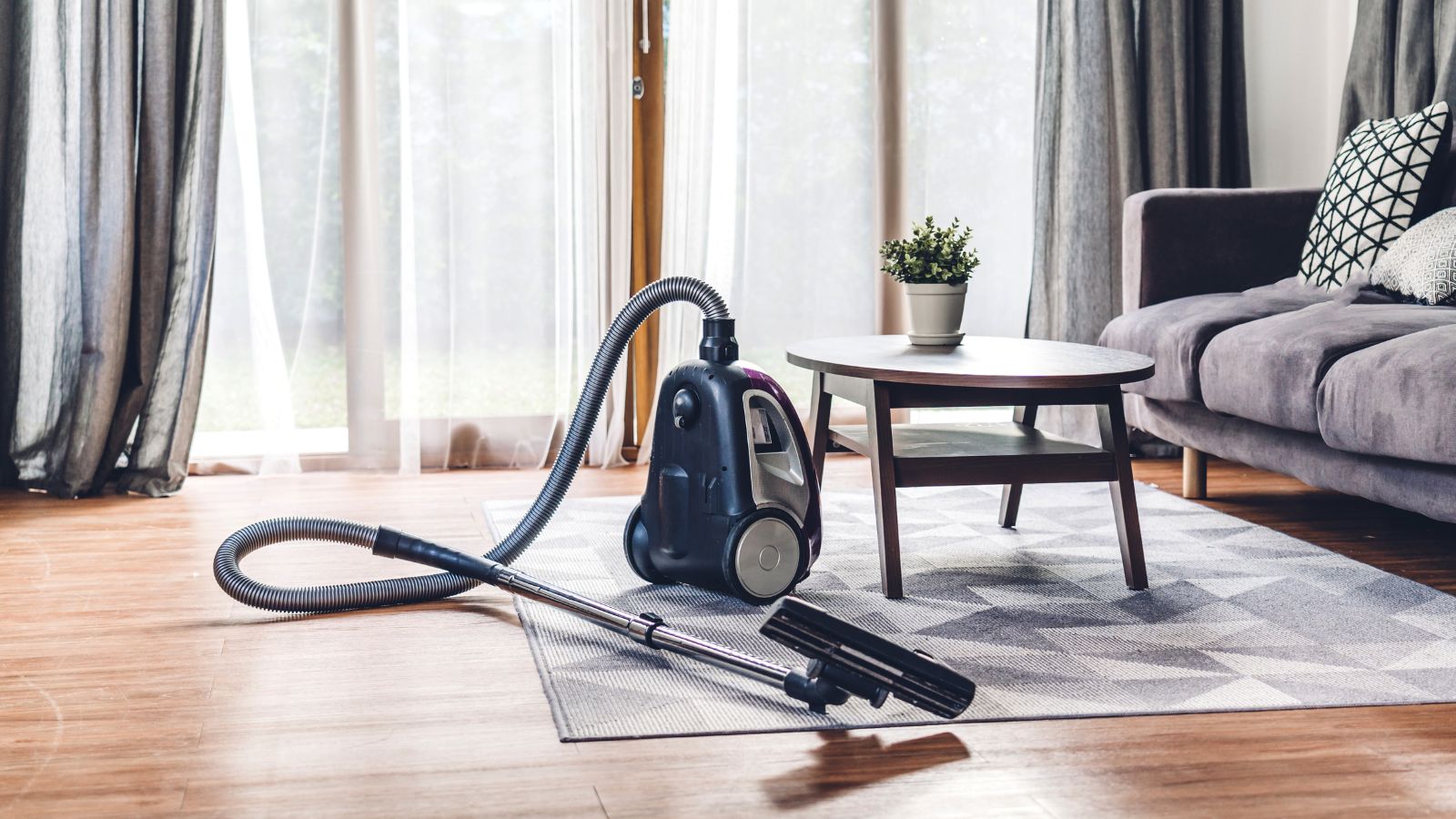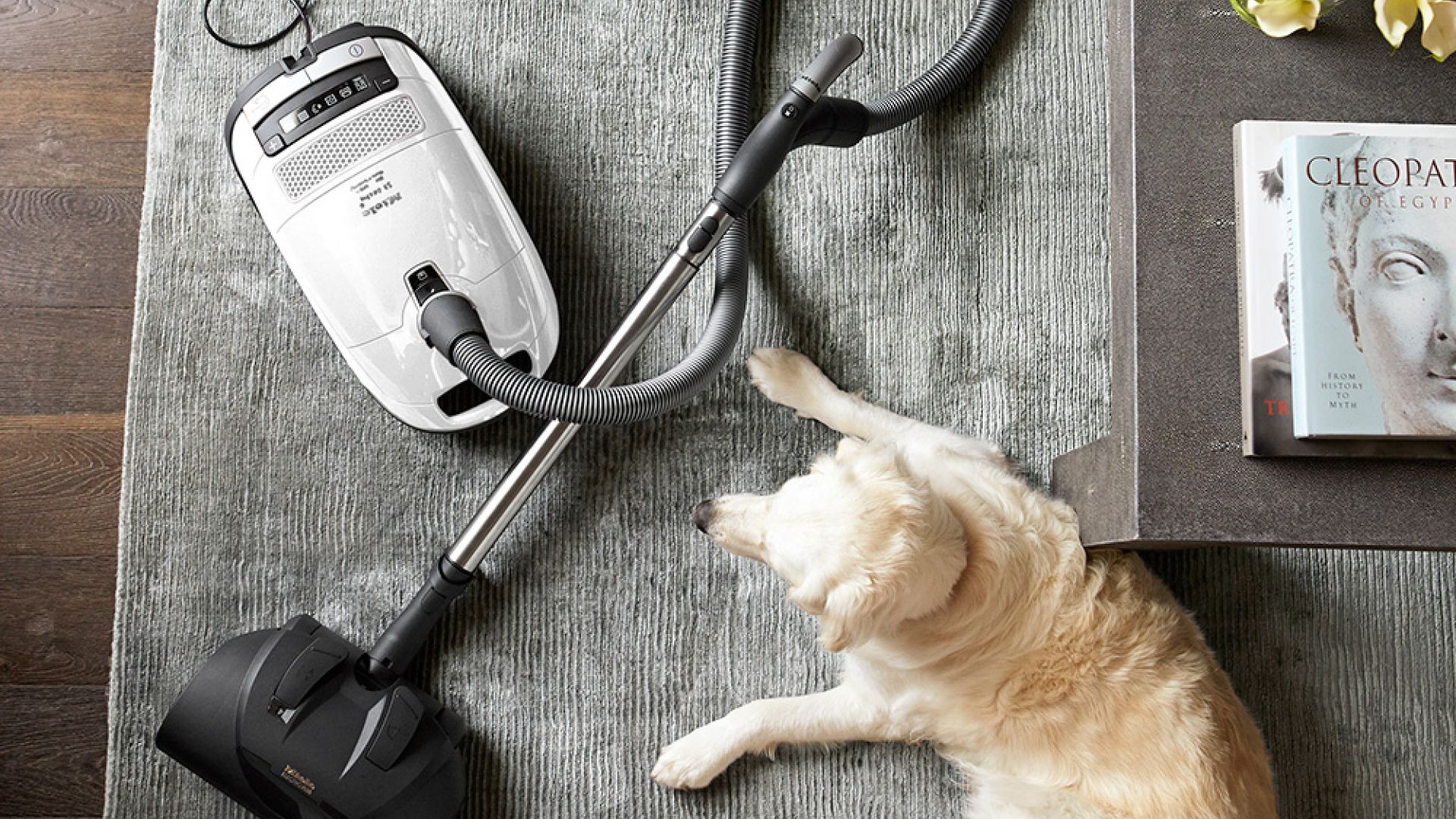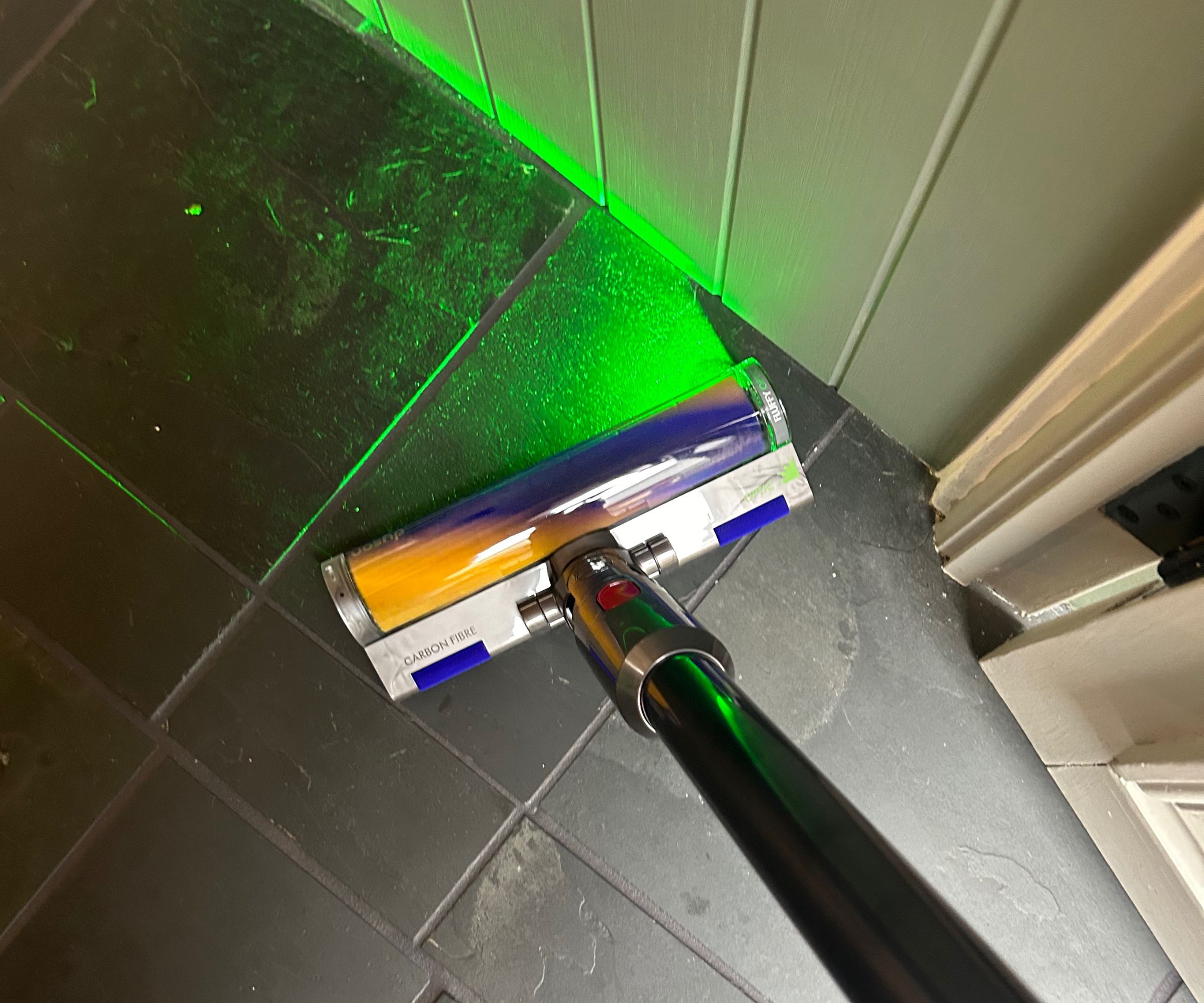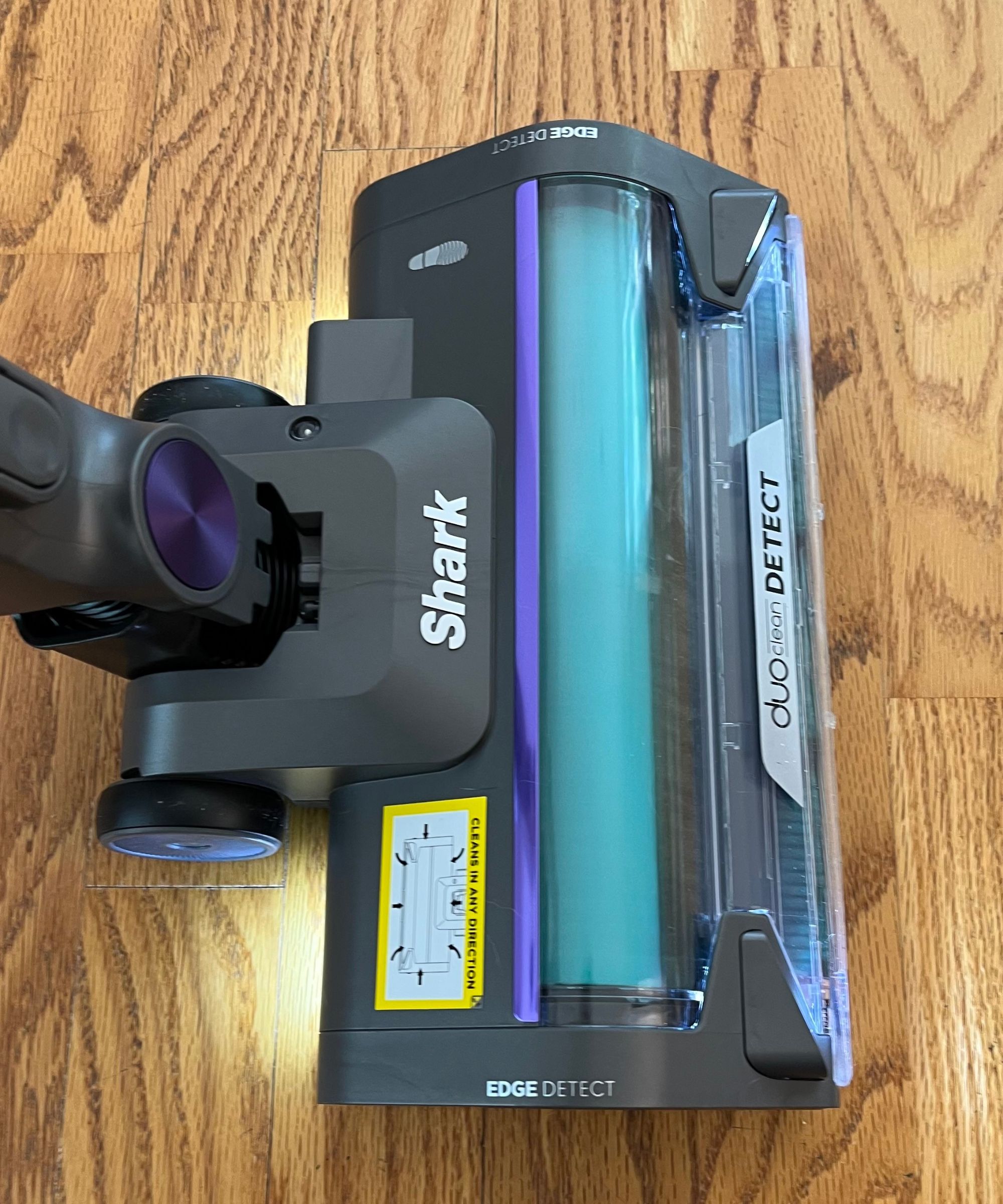Vacuum jargon buster – I'm a home tech editor and these are all the words you need to know before buying a vacuum cleaner
From HEPA filters and brushrolls to DuoClean PowerFins, vacuum cleaners come with confusing terms, so here's my complete A to Z

Upgrading your vacuum cleaner is an important and often expensive decision. Apart from the abundance of choice, the process can be made even more frustrating by the seemingly endless techy-terms describing each vacuum's design and engineering qualities.
So, when it comes to knowing how to choose a vacuum cleaner, I've created this A to Z vacuum jargon buster to explain clearly exactly what everything means, to help better inform your purchase decision.
As Homes & Gardens' home tech editor, my team of product testers and I have reviewed 48 of the world's best vacuums. I test and write about them on a daily basis, so I'm all too familiar with what each term means in theory and in practice.
My expert vacuum jargon buster, A to Z
- Air watts. This is the most accurate unit of measurement for suction power. Unlike watts, which explains how much power a vacuum cleaner uses, air watts actually takes into account the airflow and the size of the nozzle or floorhead, to give an accurate figure for a vacuum's suction power. You may see this referenced as 'aw'.
- Allergens. These are particles that trigger allergies. Common allergen types include pollen, pet dander and dust; vacuum cleaners with tight filtration, like a HEPA filter (more on this later), should be able to capture these.
- Anti-tangle (or anti-hair wrap). Many motorized vacuum floorheads and attachments will promise 'anti-tangle' qualities, to avoid hair from your floors wrapping around the brushroll. Vacuum attachments without this quality can lead to you periodically having to manually remove hair after vacuuming.
- Bagged or bagless. Vacuum cleaners used to only be 'bagged' – meaning they use disposable vacuum bags that act as the filter and collect all the dust and particles, and when full, get disposed of. It's an efficient approach, and one that's still used in many vacuums today (like the Miele Complete C3, which we reviewed), but it isn't the most sustainable or financially savvy, as you have to keep buying bags to use in the vacuum cleaner. Instead, most vacuums are now bagless, meaning they have dustbins or containers that you empty and clean after vacuuming.
- Brushroll. This is the spinning component of a vacuum floorhead or motorized attachment. Some brushrolls will have sharp bristles to dig into carpet while others are soft cylinders for use on hard floors. Some will have anti-tangle veins to avoid hair wrapping around during cleaning.

- Canister or cylinder vacuum. This is a vacuum type with a main body (known as the canister or cylinder) that's designed to be pulled behind you, while you clean using a hose and floorhead. Canister vacuums can offer some of the highest suction power seen in vacuums and are often the choice for professional cleaners. They take up a lot of space when storing your vacuum and aren't the best for going up and down the stairs. They will not be cordless, either.
- Cleaning station (or cleaning dock or system). Some cordless vacuums, like the Tineco Pure One Station, come with a cleaning station that charges and empties the vacuum between uses. They'll have their own layer of filtration and will store dust for weeks before you have to empty it. Some will clean the vacuum too, pulling a powerful flow of air through the appliance to clear away any trapped dust.
- Cordless or stick vacuum. A modern, lightweight type of vacuum cleaner in a 'stick' design that do not have a wire that plugs into an outlet. It runs on a battery that recharges. The best cordless vacuums are more agile and versatile but don't typically offer the cleaning power of an upright or canister vacuum (unless you look at the expensive Dyson Gen5detect).
- Crevice tool. The long, thin, hard, cleaning tool attached to the end of a vacuum wand or hose, ideal for cleaning tight spaces like cars or between couch cushions.
- Cyclone engineering. Invented by James Dyson to replace bagged vacuums. A cyclone vacuum uses spinning air (a vortex) to separate dust and dirt from the air. Dyson's cyclone engineering is patented.
- dB or dBa. An abbreviation of 'decibels', the unit of measurement for noise levels. Vacuum noise levels can range from anywhere between 70 and 90 decibels – cordless vacuums are quieter, upright vacuums are louder. Usually, the more power, the louder it is, but this isn't always the case.
- Detection. Vacuums like the Dyson V15 Detect and the Shark Cordless PowerDetect, both of which we have reviewed, have 'detection' technology. Usually, this means detecting the floor type and the dust volume so it can automatically adjust the suction power for a powerful and effective clean. Dyson vacuums detection technology also includes a live count of how many individual particles are collected to give you more insight into your cleaning. The reality of this technology is you'll be able to understand easily which areas of your home are most dirtiest, and may therefore need more suction, more battery life and more time/frequency for cleaning.

- DuoClean PowerFins (Shark). Some of Shark's vacuums like the Shark Vertex Pro, which we reviewed, use DuoClean PowerFins – a floorhead with two brushrolls for multi-purpose use across hard floors and carpets as each surface needs a different type of brushroll for effective cleaning.
- Dust mites. Microscopic bugs that live across our homes, that feed on dead skin cells and thrive in dark, warm, moist environments. 'Dust allergies' actually refer to allergies to the fecal matter left behind by dust mites. It's for this reason that it's important to vacuum your mattress regularly.
- Dustbin. The container found in bagless vacuums that fill with dust as you clean. You will need to empty this yourself. If you have asthma or other lung conditions this may be an important feature to consider.
- Dusting brush. Cleaning tool with soft bristles, particularly useful for cleaning the dust from baseboards, shelves, TVs and windows.
- Filter. The part of a vacuum cleaner responsible for capturing picked-up particles. As air passes through the vacuum cleaner, dust and debris are trapped using a filter so that any air that exits out of the vacuum exhaust does so without re-releasing the particles into your home. Vacuums can have pre-motor filters and post-motor filters to capture different-sized particles at different places. Knowing how to clean your vacuum filter will preserve the lifespan of your vacuum.
- Floorhead. The vacuum attachment that cleans the floor, usually with a wide head and motorized brushrolls to pick up dust, debris and hair.
- FluffyOptic (Dyson). The floorhead used in Dyson's best cordless vacuums (the Gen5detect, V15 Detect and V12 Detect Slim, which we reviewed). It features a green laser that, on test, does actually reveal dust that the naked eye can't see, as well as detecting floor type and dust volume to automatically adjust suction power up or down for the best clean.
- Handheld vacuum. A small vacuum cleaner that can be used with one hand, ideal for small cleans and to have around whenever crumbs or pet hair appear. Most cordless vacuums can be switched into handheld vacuums by removing the wand.

- HEPA (High-Efficiency Particulate Air) filter. A type of filter that is able to trap super-fine particles used in vacuums, air purifiers and other appliances. For a filter to be labeled HEPA, it must meet strict standards of being able to capture 99.97% of particles that are 0.3 microns in size. One micron is 1/1000 of a millimeter, to give you a tangible perspective. A vacuum needs a HEPA filter to capture many allergens like pollen and pet dander.
- Hose. The bendy tube used mainly in canister and upright vacuums for handheld vacuuming with an attachment on the end.
- Motor. The source of a vacuum's functionality and noise. The motor, made of fans and electrical components, pulls air into the appliance by creating a partial vacuum. This means there the air inside the vacuum has been partially removed by the motor and therefore will be able to suck in particles and air from outside.
- Motorbar (Dyson). Motorized floorhead found in most of Dyson's cordless vacuums. It can be used on all floor types but is especially suited to carpets, rugs, and vacuuming hair and eases the force you need to put into pushing and pulling your vacuum around in use.
- Robot vacuum. A small vacuum device that cleans floors independently, meaning it doesn't need a human to push it around. They use built-in navigational systems (and sometimes Artificial Intelligence, also known as AI) to find its way around. The best robot vacuums can create maps of your homes. Robot vacuums aren't as powerful as cordless, upright and canister vacs, and are instead ideal for regular maintenance and light cleaning as they may not cope well with large volumes of debris, such as a cup of flour or cereal.
- Upholstery tool. A non-motorized cleaning attachment with a wide head that can vacuum particles out of a mattresses or furniture. They usually have soft rubber teeth to loosen any stuck-on dirt and dust and avoid scratching your upholstery and other surfaces.
- Upright vacuum. A powerful, corded type of vacuum cleaner that is the ideal choice for cleaning carpets and large homes. Unlike cordless vacuums, the best upright vacuums aren't restricted by battery power as they plug into the mains, so can provide high suction power for deep cleaning, for extended periods of time. For comparison, the very best cordless vacuums can run for 40-50 minutes, but if you increase the suction to max power, that will reduce. A plug-in upright vacuum will run on max power as long as you need as it's corded, and pulling its supply from an outlet.
- Wand. The thin, long part of a cordless vacuum cleaner that connects the vacuum to the floorhead or attachment. Most cordless vacuums allow you to remove the long wand section to use the cordless vacuum as a handheld vacuum.
- Warranty. The number of years a manufacturer will offer replacement parts or a full replacement service. Terms vary for each brand, but this can include replacing the vacuum if there are any manufacturing faults.
Next, find out what all the vacuum cleaner attachments do, and learn how to clean your vacuum cleaner to preserve its longevity.
Sign up to the Homes & Gardens newsletter
Design expertise in your inbox – from inspiring decorating ideas and beautiful celebrity homes to practical gardening advice and shopping round-ups.

Dan is the Home Tech Editor for Homes & Gardens, covering all things cleaning, smart home, sound and air treatment across the Solved section. Having worked for Future PLC since July 2023, Dan was previously the Features Editor for Top Ten Reviews and looked after the wide variety of home and outdoor content across the site, but their writing about homes, gardens, tech and products started back in 2021 on brands like BBC Science Focus, YourHomeStyle and Gardens Illustrated.
They have spent more than 200 hours testing and reviewing vacuums for Homes & Gardens, and have even visited Dyson's engineering labs for the full low-down of the ins and outs of our trusty cleaners.
Dan has a BA in Philosophy and an MA in Magazine Journalism. Outside of work, you'll find them at gigs and art galleries, cycling somewhere scenic, or cooking up something good in the kitchen.
-
 Are you making the most out of the estate sales in your area? These are the 5 most valuable items you should be shopping for
Are you making the most out of the estate sales in your area? These are the 5 most valuable items you should be shopping forVintage lovers and antique experts share the objects you should always look out for when you're exploring an estate sale
By Eleanor Richardson
-
 How to grow sassafras – for a low-maintenance native tree that can even be planted in shady yards
How to grow sassafras – for a low-maintenance native tree that can even be planted in shady yardsFor an easy-to-grow North American tree, you will not find much better than sassafras
By Thomas Rutter
-
 I've spent over 200 hours testing vacuums and swear by my two Dysons – this is how I properly clean a Dyson vacuum filter for longer-lasting appliances
I've spent over 200 hours testing vacuums and swear by my two Dysons – this is how I properly clean a Dyson vacuum filter for longer-lasting appliancesYour Dyson vacuum will last much longer and clean at its best
By Dan Fauzi
-
 Do cleaning products expire? Professional cleaners warn time could make them ‘less effective, and in some cases, irritating to use’
Do cleaning products expire? Professional cleaners warn time could make them ‘less effective, and in some cases, irritating to use’For the best results, it pays to stay on top of the timeline of your cleaning products
By Chiana Dickson
-
 How to clean a patio – 6 different methods, and when you must use a chemical cleaning agent
How to clean a patio – 6 different methods, and when you must use a chemical cleaning agentFrom manual scrubbing, natural solutions or calling in the pros, industry experts reveal the benefits and considerations of each method
By Andy van Terheyden
-
 5 surprising but brilliant ways to clean with old socks – from perfectly buffing stainless steel to deterring pests naturally and more
5 surprising but brilliant ways to clean with old socks – from perfectly buffing stainless steel to deterring pests naturally and moreTackle dust in tricky corners, clean your mirrors and even banish bad odors with those rogue single socks
By Andy van Terheyden
-
 5 things people with clean upholstery always do – simple, quick and oh-so-effective
5 things people with clean upholstery always do – simple, quick and oh-so-effectiveEnsure your furnishing looks clean year-round with these expert tips
By Seraphina Di Mizzurati
-
 'Wick away the ick' – 6 things people with clean laundry rooms always do to make this hardworking space shine
'Wick away the ick' – 6 things people with clean laundry rooms always do to make this hardworking space shineThese tips on how to clean your laundry room will banish grime
By Seraphina Di Mizzurati
-
 How safe are carpet deodorizers? As a seasoned vacuum tester, I urge you to try alternative methods
How safe are carpet deodorizers? As a seasoned vacuum tester, I urge you to try alternative methodsNatural cleaning is always the answer
By Dan Fauzi
-
 'The world will not end' – 5 cleaning habits to quit for a happier, easier life, and what to do instead
'The world will not end' – 5 cleaning habits to quit for a happier, easier life, and what to do insteadGet your home sparkling, minus the stress
By Ciéra Cree